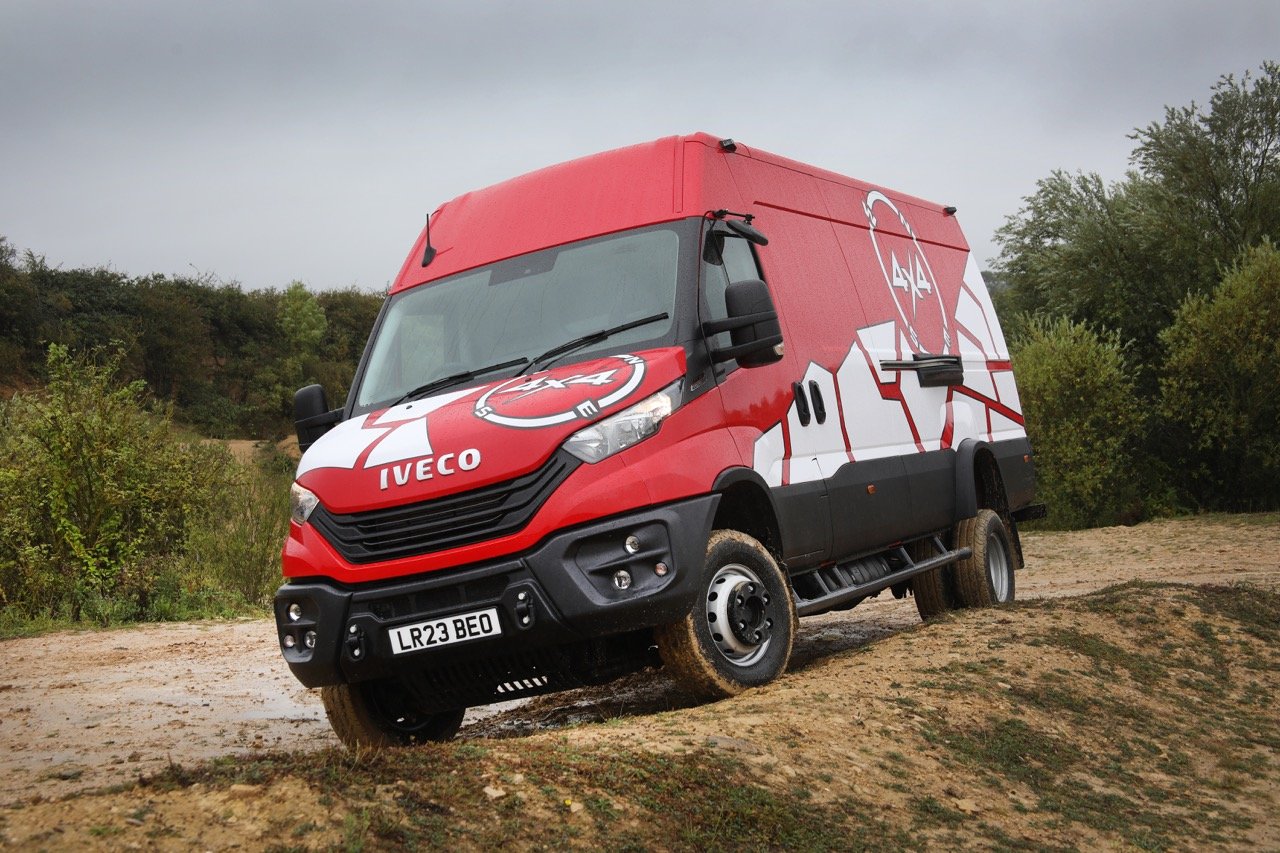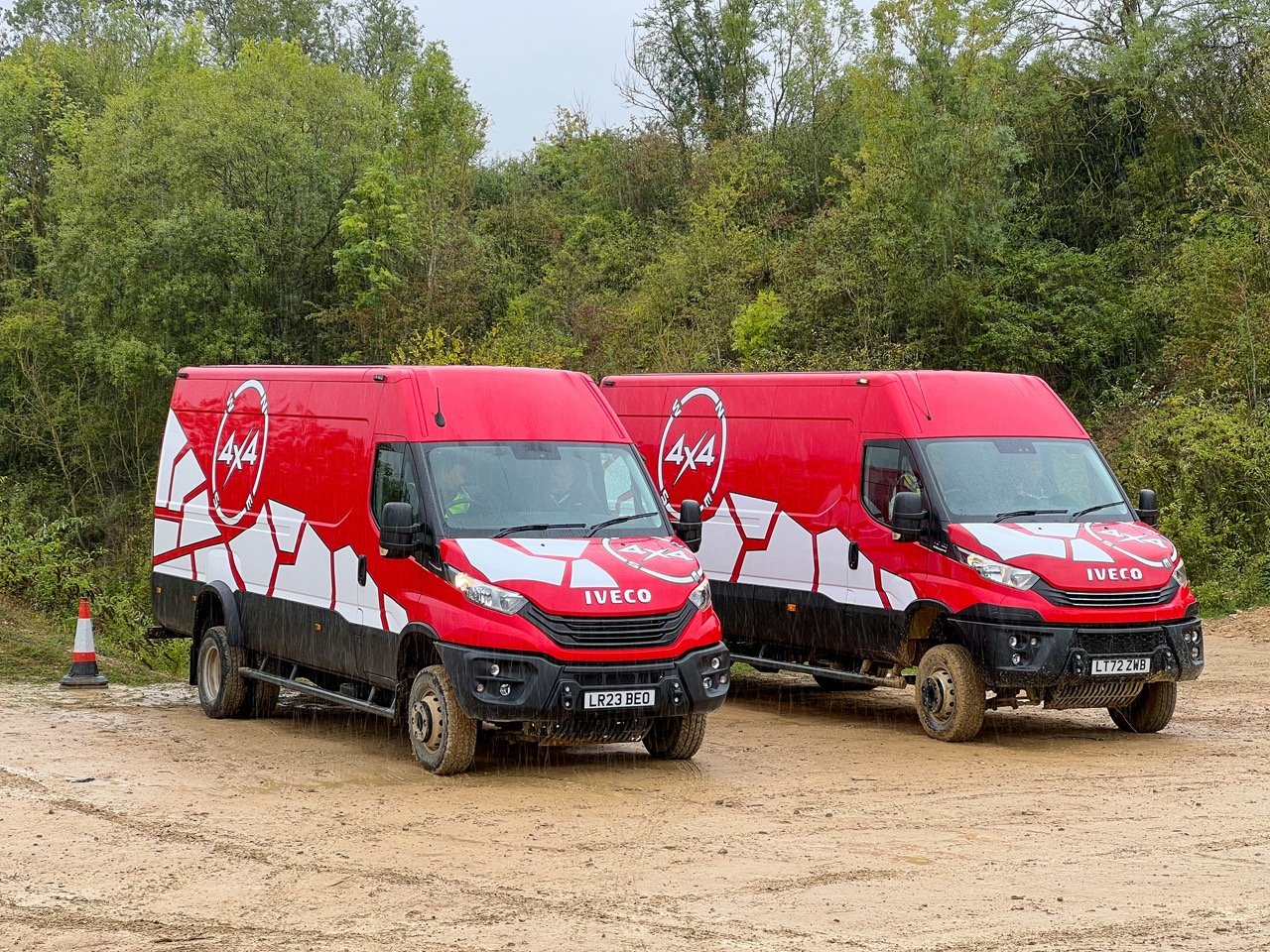IVECO Daily 4x4
I was invited to Tixover quarry near Stamford to drive the IVECO Daily 4x4 off-road.
When we arrived at the quarry the rain hadn’t stopped all morning, a lot of normal people would describe it as wet and miserable, but with deep water and loose traction, I’m sure you would agree with me in saying that it was perfect conditions to test a 4x4.
Before I get into the driving and splashing part, here’s a bit about Iveco’s Daily.
If you want the 4x4 version, which is available only in 5.5 or 7.0-tonne gross vehicle weight, then you will have to have passed your driving test before 1 January 1997 , or upgraded it to a Category C1 licence. Fortunately, because I’m old as… and passed my driving test back in 1985 can drive anything up to 7.5 tonne.
There are two versions of Iveco Daily 4x4 – an All Road and Off Road. Confusingly the All-Road is also referred to as the On/Off Road, and is designed and engineered to be used on just that - a bit like an All-Terrain tyre.
The All Road still has the lifted suspension and fully lockable four-wheel-drive system, but is identified by its twin rear wheels.
The Off Road version has single wheels at the rear, taller wheel and tyre combo and a slightly different differential arrangement. The Off Road is intended to be used almost exclusively off-road, though. Of course it’s still road legal, but less enjoyable, I’m told.
Both vehicles feature a specially uprated chassis, three-piece steel front bumper, front, centre and rear differential locks and low range which is selected via a button on the dash with a tortoise on it. Seriously!
When it comes to powering the Daily, they’re fitted with a 3.0-litre diesel with 180hp and 430Nm of torque which meets the latest Heavy Duty Euro VI emissions requirements. Gearbox wise you have a choice of either six-speed manual and Hi-Matic eight-speed automatic. The latter was our only option of the day.
Parked up were two Daily 4x4s - to give us an idea of just how capable they are we were told that one Daily 4x4 was being used in high ratio only, and the other was in low box.
Curiously I jumped in the former, and before I set off, the instructor, who reads the mag, talked me through the Daily’s buttons, knobs and switches, and we were off.
With the aforementioned rain still quite heavy, the terrain was sloppy to say the least, and I was directed around quite a demanding route with some decent climbs and descents. In high ratio and shod with road-biased tyres the Daily managed everything with ease. That said, our instructors had the habit of locking certain diffs before we reached certain obstacles, wish they hadn’t as it would’ve been interesting to experience the limits of the vehicles. Still, I was very impressed.
Next up was the Daily 4x4 in low box, and yes, our route was much more demanding. A little bit of throttle here and there got us through some really deep mud and up some steep and slippery sections. The Iveco team had dug out a channel of deep opposing holes to test both articulation and lockers. They were both deep yet futile as the Daily 4x4 simply drove through them like they weren’t there.
For the really sloppy bits, both versions of the Daily 4x4 are equipped with a wading mode that disengages the engine fan to prevent any damage. Slightly surprisingly the wading depth is only 650mm (255/100 R16 tyres), I say surprisingly as a Range Rover can handle 900mm, and INEOS Grenadier 800mm. I know they’re different vehicles, but I expected more.
Overall off-road performance was excellent, obviously helped with 3 lockers, increased ride height, underfloor protection and a separate chassis, which I’m told is quite unique among large vans.
The eight-speed auto took the stress out of driving as I didn’t have to worry about changing gears for the descents and inclines, I just focussed on positioning it and applying the right amount of throttle. For an auto engine-braking on steep descents was surprisingly good, but we were unladen, throw a load in the back and it might be a different story, especially as there’s no dedicated hill-descent mode.
They're a bit on the large side, as long as 7m in some cases, which means there is a load area in the panel van versions that can be as big as 18.0 cubic metres. Whilst the other motoring journos there were looking at commercial use and how many pallets they could fit inside, I was wondering what they would look like fitted with all the mod-cons you would expect from a long distance camper van.
I had a good chat to the Iveco PR team about a camper van version, and there might be one on the fleet some time next year, I really hope it comes to fruition.













